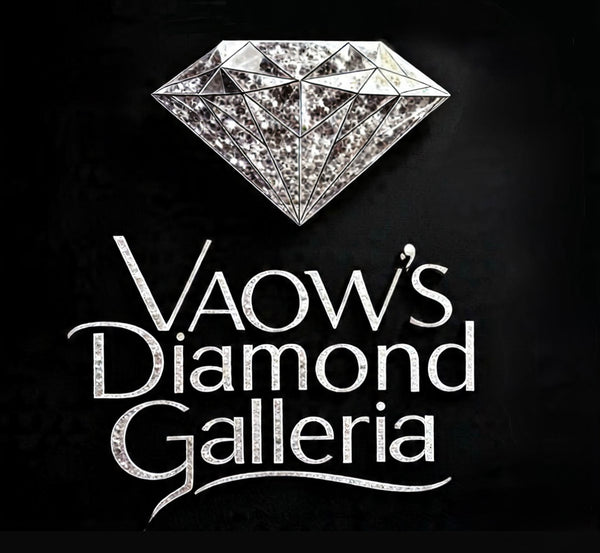
Diamond Quality and the “4Cs”
Share
The 4Cs: Core Diamond Quality Factors
The 4Cs—developed by the Gemological Institute of America (GIA)—are the universal standard for evaluating diamond quality, whether natural or lab-grown.
1. Carat (Weight):
• Definition: Carat measures a diamond’s weight, where 1 carat equals 200 milligrams. Larger diamonds are rarer and typically more valuable.
• Impact on Quality: Higher carat weight increases value but doesn’t guarantee beauty. A smaller, well-cut diamond can outshine a larger, poorly cut one.
• Example: A 1-carat diamond is more valuable than a 0.5-carat diamond, but price also depends on the other Cs.
2. Cut:
• Definition: Cut refers to how well a diamond is shaped and polished, affecting its brilliance and sparkle. It’s graded from Excellent to Poor (GIA scale).
• Impact on Quality: The cut determines how light reflects within the diamond. A well-cut diamond maximizes sparkle, making it appear more vibrant. Key factors include proportions, symmetry, and polish.
• Popular Shapes: Round brilliant (most sparkle), princess, emerald, cushion, and oval. Round cuts often command a premium due to their brilliance.
3. Clarity:
• Definition: Clarity measures the presence of internal inclusions (flaws) or external blemishes. GIA grades clarity from Flawless (no inclusions visible under 10x magnification) to Included (I1–I3, visible flaws).
• Impact on Quality: Higher clarity grades (e.g., VVS or VS) indicate fewer imperfections, enhancing value. However, “eye-clean” diamonds (SI1 or higher) often look flawless to the naked eye, offering good value.
• Note: Inclusions in natural diamonds reflect their unique geological history, while lab-grown diamonds often have fewer inclusions.
4. Color:
• Definition: Color assesses how colorless a diamond is, graded from D (colorless) to Z (light yellow or brown). Fancy-colored diamonds (e.g., pink, blue) are graded separately.
• Impact on Quality: Colorless diamonds (D–F) are the most valuable for white diamonds, as they reflect light purely. Near-colorless (G–J) diamonds offer a balance of quality and affordability for most buyers.
• Fancy Colors: Rare hues like blue or pink can significantly increase value due to their scarcity.
Additional Factors Affecting Diamond Quality
Beyond the 4Cs, other factors influence a diamond’s quality and appeal:
1. Fluorescence:
• Definition: Some diamonds emit a soft glow (usually blue) under UV light. Graded from None to Very Strong.
• Impact: Weak to medium fluorescence can enhance a diamond’s appearance, especially in lower color grades (e.g., I–J), by masking yellowish tints. Strong fluorescence may make a diamond appear hazy, lowering value in high-color grades (D–F).
2. Certification:
• Definition: A grading report from a reputable lab (e.g., GIA, IGI, AGS) verifies a diamond’s 4Cs and authenticity.
• Impact: Certified diamonds command higher trust and value. GIA and IGI the gold standard for natural and lab-grown diamonds, ensuring transparency for your customers.
3. Origin (Natural vs. Lab-Grown):
• Natural Diamonds: Formed over billions of years, valued for rarity and geological history. Their unique inclusions can affect clarity but add character.
• Lab-Grown Diamonds: Created via HPHT or CVD methods, often purer (higher clarity) and more affordable. They’re chemically identical but lack the natural “story”.
4. Polish and Symmetry:
• Definition: Polish refers to the smoothness of a diamond’s surface, while symmetry assesses the alignment of its facets. Both are graded from Excellent to Poor.
• Impact: High polish and symmetry enhance sparkle and value. Poor polish or symmetry can dull a diamond’s appearance, even with a good cut grade.
• Pricing Strategy: Higher-quality diamonds (e.g., D-color, VVS clarity, Excellent cut) command premium prices, while mid-range options (G–I color, SI1 clarity) attract budget-conscious
